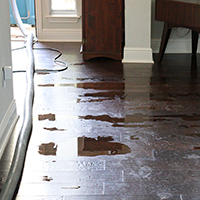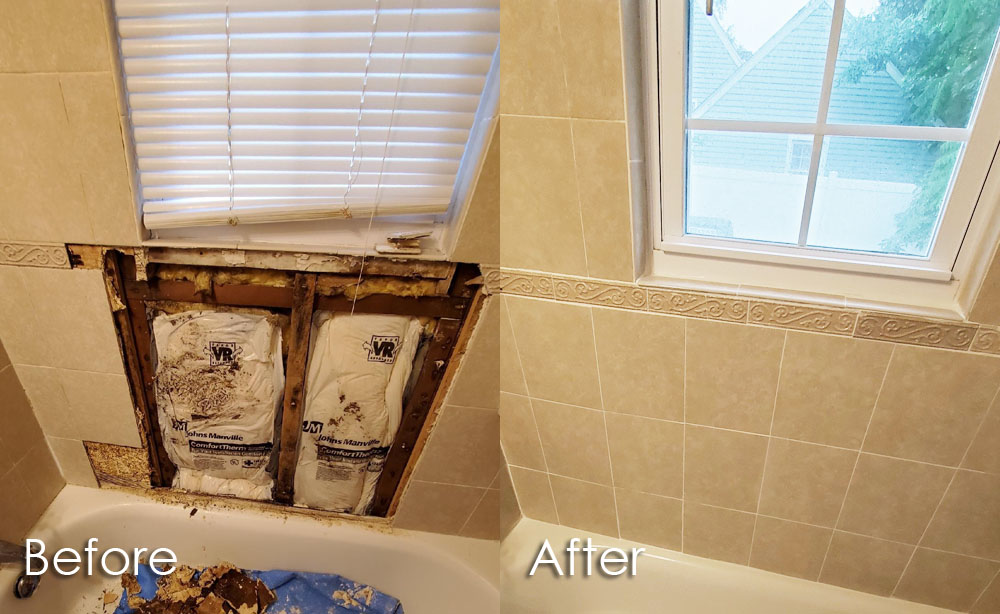Stopping Water Damage in the Bathroom
Stopping Water Damage in the Bathroom
Blog Article
The article which follows in relation to How to Fix a Water Damage Bathroom is without a doubt interesting. Don't miss out on it.

The washroom is incredibly susceptible for damp buildup and prospective water damages as a result of the frequent use water in it. This write-up offers easy assessment strategies to help discovering water damage dangers.
The constant use of water in the restroom makes it very prone for wet buildup and potential water damage. By checking it on a regular basis, you can lower water related damages.
The following set of assessments is simple to do and also need to be done once in every 3 months in order to maintain your bathroom in good shape and to avoid prospective water damages triggered by the tub, the shower, pipeline joints as well as plumbing, sinks, closets, and also the commode
Do not forget executing these examinations and also be detailed while executing them. Remember that these basic assessments can save you a lot of money by providing very early signs for water damages
Bath tub as well as Shower
The shower as well as tub need special attention and maintenance. Examine the floor tiles and also change if split. Ensure that there is no missing grout between the ceramic tiles. Examine as well as replace broken caulking at joints where the walls meet the floor or the bathtub. Clogged drains and pipes issues will avoid the bathtub from drying and may show significant troubles under the tub. Talk to an expert right away to avoid structural damages. Focus on discolorations or soft areas around the bathtub wall surfaces as they might suggest an interior leak.
Plumbing
Signs for water damage are tough to find considering that many pipes are mounted inside the wall surfaces.
Pay special attention to floor covering and also wall surfaces moisture and discolorations as they might indicate an invisible plumbing trouble. Examine wetness levels in adjacent spaces as well.
Sinks and Cabinets
Sinks and also cupboards are exposed to dampness as well as humidity daily and also are typically overlooked. Evaluate on a regular basis under the sink as well as on the countertop over it. Repair any kind of drip in the catch as it may recommend drain issues. Look around the sink, slow-moving draining pipes may suggest a blocked drainpipe. Replace sink seals if they are cracked or loosened.
The Toilet
The commode is a susceptible water joint. Check the water lines as well as look for leaks around the bathroom seat, in the hose, and under the water storage tank. If you spot any kind of indications of dampness on the floor around the commode, check for leakages in the toilet rim as well as tank seals.
Be aware that hanging commode dish antiperspirants increases the opportunities for obstructions.
Water Damage Signs In The Bathroom To Avoid Cleanup
Musty smell
This is one of the easiest signs to catch because musty smells are so odorous. The damp, earthy, moldy smell should be a big red flag. The smell will develop when moisture gets trapped in surfaces, and begins to facilitate mold growth. Leaking pipes under cabinets, inside walls, and behind shower fixtures will cause moisture to stay trapped and not dry, which will lead to mold growth and spread. As soon as you notice any musty smells in your bathroom, have it checked for hidden water damage and cleanup signs.
Visible mold
If the smell isn’t there to give it away, sometimes you will actually see mold growth. Finding mold in your bathroom is a serious problem, because mold is very harmful to your health. By the time mold growth is visible, it also means that water damage has already occurred and been present for some time. The only way the mold problem can be resolved is to find the source of the moisture and get it stopped. To safely and adequately remove mold, you need to have professionals handle the remediation. Do not waste any time in getting mold problems addressed, fixed, and sanitized so that you can protect you and your family from the many respiratory symptoms caused by mold exposure.
Damaged floors
Bathroom floors should be able to withstand some exposure to water while still remaining in good condition. However, when excess exposure or water leaks occur, they will begin to damage even the most water-resistant flooring. If you notice any cracking, bubbling, staining, or warping on your bathroom floors, there is probably a water leak somewhere causing the distortion. If you notice areas of the floor have become softer, or even have a spongy feeling, there is probably damage to the subfloor. Subflooring is typically made up of plywood. When plywood is exposed to water or moisture, it will absorb it. Once it has become saturated, the weight of the excess water will cause the wood to swell and soften. Check the floors in your bathroom frequently to catch any of these sings before they lead to damaged subflooring.
Changes on walls
When water leaks behind walls, it will cause changes in the drywall. Peeling plaster, blistering paint, and soggy wallpaper are all good indicators that excess water is building up behind the wall. Water leaking behind drywall will cause it to swell and be soft to the tough. If you start to notice gaps along the trim of your walls, or where tile meets the wall, it could also be a strong indicator that there is a leak behind the wall. Any changes, distortion, or damage on the walls should be evaluated as soon as you notice it to prevent further water damage and cleanup.

I have been very involved in Preventing Water Damage in the Bathroom and I'm hoping you enjoyed reading the entry. Sharing is caring. You just don't know, you may be doing someone a favor. Thank you for going through it.
Show Details Report this page